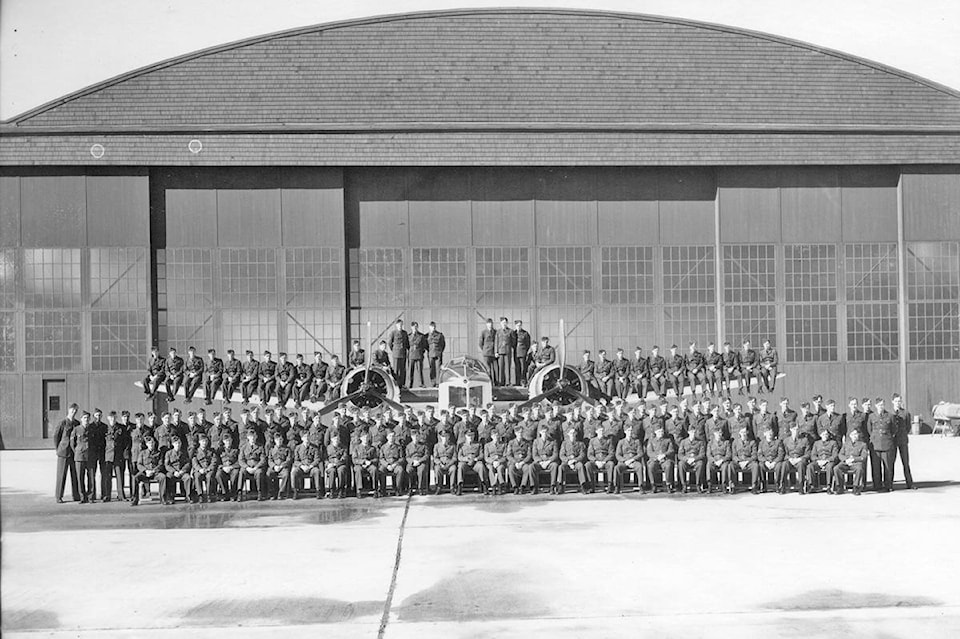As the scene of the only direct attack on Canadian soil, the Tofino-Ucluelet area was deeply affected by the Second World War.
With international tensions increasing during the 1930’s, Canada’s federal government began plans for defending the country’s west coast. Air Force bases were built in both Ucluelet and Tofino for reconnaissance and defence against submarines, according to Parks Canada spokesperson Laura Judson.
“Construction of the airbase at Tofino was accelerated in 1942 and the base became a forward staging site for fighter planes assigned to fending off potential Japanese air attacks aimed at Vancouver [and] Victoria,” Judson told the Westerly News.
She said the Canadian Military did not consider the risk to the West Coast to be “especially high,” but did anticipate that Japanese forces would carry out “small scale hit-and-run attacks, bombardments, and limited air strikes,” in the region.
“As predicted by military strategists, the Japanese Navy carried out small scale submarine attacks on shipping and shore installations along the coast in 1942. This included the bombardment by Japanese submarine I-boat 26 on the lighthouse at Estevan Point in June 1942. This was the only time Canadian soil was directly attacked over the course of the Second World War,” she said. “The last ‘action’ on the West Coast consisted of shooting down incendiary bombs, attached to high altitude balloons, launched by the Japanese between December 1944 and March 1945. Western Air Command stationed two fighters at Tofino ready to shoot down these balloons.”
Japan surrendered in August, 1945, and the bomber reconnaissance squadrons based at Tofino and Coal Harbour were disbanded.
READ MORE: VIDEO: Tofino council apologizes for 1947 motion to ‘exclude Orientals’
The war effort brought substantial infrastructure to the West Coast, including a communications station in Tofino and two wharves constructed at Grice Bay, one for gravel barges to facilitate airport construction and another to bring in fuel.
A road at McLean Point was built to provide access.
“The bases brought construction workers, Army, and Air Force Personnel, and in some instances, their families, to the area in 1942-43,” Judson said. “At the high point of activity, the base at Tofino, with 978 personnel assigned to the station, was one of the largest communities on the west coast of the Island.”
The communications station in Tofino was built at what is now known as Radar Hill, inside the Pacific Rim National Park Reserve, and was removed at the end of the war. Another station was built there in the mid-1950’s associated with the ‘Pinetree Line’ as part of North America’s defensive buildup during the Cold War, according to Judson.
She added the Park Reserve’s landscape still contains remnants of the war, including unexploded explosives, which are occasionally discovered in the sand along Long Beach.
“Long Beach itself was studded with pilings and strewn with barbed wire and cable to forestall sea or air landings on it. There were army ‘camps’ located between Ucluelet and Tofino, and beach areas were used for live-fire training and bombing practice. This is the origin of the name Incinerator Rock,” she said. “Identification and clean-up of unexploded ordnance began in the late 1950s and has occurred in recent years on the sunken HMCS Thiepval and Wickaninnish sand dunes.”
READ MORE: Explosives to be removed from historic shipwreck near Ucluelet and Tofino
Another relic of WWII is a Canso Bomber, an amphibious airplane, which has remained where it crashed almost immediately after taking off from the Tofino Airport en route to Coal Harbour in 1945.
“All 12 people on board survived the crash, but the plane itself was written off,” Judson explained. “Following the crash, the Royal Canadian Air Force personnel hiked to the site to retrieve the radio and machine guns. They also removed and detonated the depth charges, not far from the wreck site- creating a crater. Since the crash, the plane has remained in situ.”
The crashed bomber has become a popular treasure for both local and visiting hikers to hunt for, but Judson said Parks Canada asks visitors to be safe and respectful around the area.
“Many visitors hike to the crash site on an unofficial trail, and this has created significant damage both to the plane and the surrounding natural and cultural resources,” she said. “The unmarked trail has also resulted in many visitor safety incidents. Parks Canada discourages people from visiting the site and asks that visitors instead enjoy others trails with links to World War II history, such as the Willowbrae Trail which leads to Florencia Bay that was once used as World War II military training grounds.”
The Park Reserve’s Superintendent Karen Haugen added that there are plenty of other sites that are rich with fascinating connections to the war effort and open to exploring within the Park Reserve.
“From lighthouses to battlefields, historic neighbourhoods to cultural landscapes, there is an amazing array of places and stories to discover. Today, the location of Pacific Rim National Park on the very edge of western Canada is synonymous with incredible natural beauty and peaceful solitude, but 75 years ago, this location made the region vulnerable to international attack,” she said.“For visitors and locals interested in visiting sites connected to World War II history, we encourage you to enjoy the view from Radar Hill, or take a walk along Long Beach. Parks Canada is responsible for protecting nationally significant examples of Canada’s natural and cultural heritage and sharing the stories of these treasured places with Canadians, and it is important to consider how these areas were once a key part of Canada’s West Coast defence system.”
READ MORE: Queen, world leaders honour veterans to mark D-Day anniversary
READ MORE: D-Day veterans revisit Normandy, recall horror and triumph
andrew.bailey@westerlynews.ca
Like us on Facebook and follow us on Twitter
